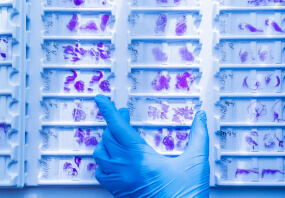General description
Amyloid beta A4 protein (UniProt P05067; also known as ABPP, Alzheimer disease amyloid protein, Amyloid precursor protein, APP, APPI, Cerebral vascular amyloid peptide, CVAP, PN-II, PreA4, Protease nexin-II) is encoded by the APP (also known as A4, AD1) gene (Gene ID 351) in human. Amyloid precursor protein (APP) is initially produced with a signal peptide sequence (a.a. 1-17), the removal of which yields the mature protein with a large extracellular portion (a.a. 18-699), followed by a transmembrane segment (a.a. 700-723) and a cytoplasmic (a.a. 724-770) tail. APP can be further processed by the α-, β-, and γ-secretases in two alternative processing pathways. In the non-amyloidogenic pathway, APP is first cleaved by the plasma membrane-localized α-secretase to generate an N-terminal extracellular sAPPα fragment (a.a. 18-687) and a membrane-bound C-terminal fragment C83 (CTFα), which can be further cleaved by γ-secretase to produce a non-toxic small peptide p3 and a cytoplasmic APP intracellular domain (AICD). In the amyloidogenic pathway, APP undergoes β-cleavage in BACE-1 (β-site APP-cleaving enzyme)-enriched endosomes to generate an N-terminal extracellular sAPPβ fragment (a.a. 18-671) and a membrane-bound C-terminal fragment C99 (CTFβ). Subsequent cleavage of C99 by γ-secretase releases the amyloid β peptides, Aβ1-42 (672-713) & Aβ1-40 (672-711), and AICD. Aβ accumulation in the cortical and hippocampal regions of the brain is a major pathological feature of Alzheimer′s disease (AD). Aβ serine phosphorylation is shown to promote Aβ aggregation into oligomeric and fibrillar assemblies and to prevent Aβ proteolytic clearance by certain proteases.
Specificity
Clone 5H11C10 recognizes Aβ1-40 and Aβ1-42 peptides with phosphorylated Ser26, but not the non-phosphorylated peptides.
Immunogen
KLH-conjugated linear peptide corresponding to human amyloid beta peptide target region sequence with phosphorylated Ser26.
Application
Anti-phospho-Amyloid beta (Ser26), clone 5H11C10, Cat. No. MABN879, is a highly specific mouse monoclonal antibody, that targets amyloid beta peptides Ser26 phosphorylation and has been tested in ELISA, Immunofluorescence, Western Blotting.
Western Blotting Analysis: 2 µg/mL from a representative lot detected monomeric and dimeric forms of synthetic A 1-40 peptide with phosphorylated Ser26, but not the non-phosphorylated A 1-40 peptide (Courtesy of Dr. Kumar Sathish, University of Bonn, Germany)
Western Blotting Analysis: 2 µg/mL from a representative lot detected Ser26-phosphorylated oligomeric amyloid beta (pA ) peptides in brain extracts from 8-month old APP/PS1KI transgenic mice, but not in extracts from age-matched non-transgenic mice (Courtesy of Dr. Kumar Sathish, University of Bonn, Germany).
Note: Formic acid (88%) treatment following heat retrieval is recommended for immunohistochemical detection of aggregated intraneuronal Abeta peptides in brain sections (Kumar, S., et al. (2013). Acta Neuropathol. 125(5):699-709; Christensen, D.Z., et al. (2009). Brain Res. 1301:116-125).
Quality
Identity Confirmation by Isotyping Test.
Isotyping Analysis: The identity of this monoclonal antibody is confirmed by isotyping test to be IgG1κ.
Target description
~4/8 (monomer/dimer) and >188 (oligomer) kDa observed. 4.514/9.028 kDa (Abeta1-42 monomer/dimer), 4.330/8.660 kDa (Abeta1-40 monomer/dimer) calculated. Uncharacterized bands may be observed in some lysate(s).
Physical form
Format: Purified
Other Notes
Concentration: Please refer to lot specific datasheet.
- UPC:
- 51172415
- Condition:
- New
- Availability:
- 3-5 Days
- Weight:
- 1.00 Ounces
- HazmatClass:
- No
- MPN:
- MABN879












